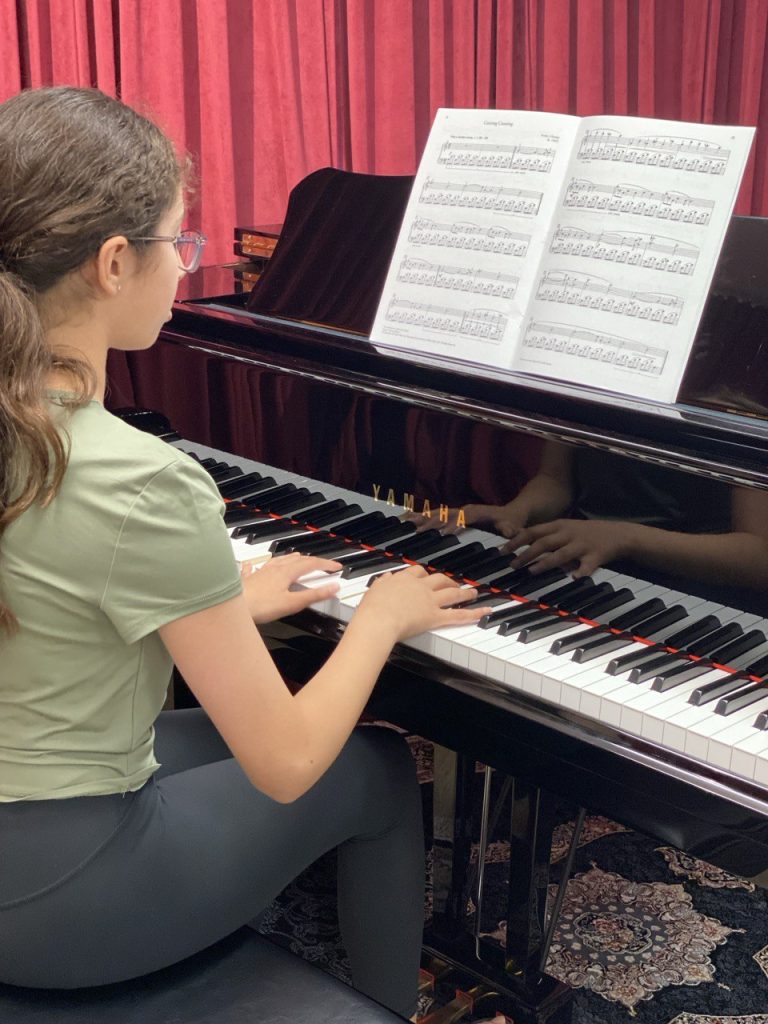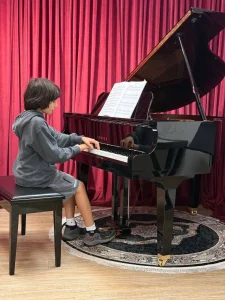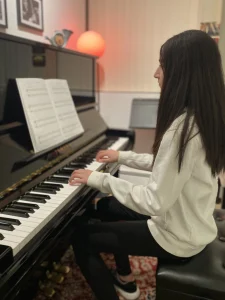Different Piano Genres: Exploring the Musical World Through Piano
The piano is one of the most versatile instruments, offering access to a wide range of musical styles. From classical masterpieces to the soul of jazz and modern pop, exploring piano genres can make your learning experience richer and more exciting. This article invites you to discover the beauty of musical variety, spark your creativity, and help you remember each genre in a fun and memorable way.
Popular Piano Genres Explained
These are the core types of piano music every pianist should know:
Classical Piano Music – A rich tradition showcasing composers like Bach, Mozart, Beethoven, Chopin. Emphasis on structure, technique, and musical expressiveness
Classical piano music spans centuries of repertoire and provides the technical backbone of piano study. Students build finger strength, sight-reading ability, phrasing, and interpretative skills. Classical training also prepares pianists for exams, competitions, and ensemble playing, making it the most structured and academically respected of all piano genres.
Jazz Piano – Rooted in improvisation, swing rhythm, chord extensions, and expressive creativity.
Jazz piano encourages learners to move beyond the written page and experiment with harmony and rhythm. Students learn about chord voicings, progressions, and improvisational language. Jazz is also a gateway to ensemble playing, where listening skills and interaction are just as important as solo performance.
Pop/Rock Piano – Simple chord progressions, catchy melodies, accessible arrangements that modern learners love.
Pop and rock piano prioritize rhythm and accompaniment skills—ideal for students who want to sing and play or join a band. Lessons often focus on chord charts, ear training, and learning songs quickly. This genre is especially motivating for teens and hobbyists, since they can play recognizable music almost right away.
Blues & Boogie-Woogie – Soulful 12-bar blues patterns; boogie-woogie adds rhythmic energy and dance-like feel.
The blues introduces the expressive use of blue notes, call-and-response phrasing, and a strong sense of groove. Boogie-woogie builds on this with left-hand bass patterns and energetic syncopation. Both styles strengthen improvisational skills and rhythmic independence, while also providing a cultural understanding of modern popular music roots.
Ragtime & Latin Jazz – Ragtime’s syncopated march rhythms (think Scott Joplin) and Latin jazz’s montuno patterns add vibrant rhythmic flair.
Ragtime laid the groundwork for early jazz with its lively syncopation and precise structure. It’s an excellent way to develop coordination between hands. Latin jazz, on the other hand, incorporates Afro-Cuban rhythms, montunos, and percussive energy. Students exploring these genres improve their rhythmic precision and versatility while gaining exposure to global music styles.
Famous Pianists in Each Piano Genre
- Classical: Ludwig van Beethoven, Frédéric Chopin, Martha Argerich
- Jazz: Thelonious Monk, Bill Evans, Herbie Hancock
- Pop/Rock: Elton John, Alicia Keys, Billy Joel
- Blues: Ray Charles, Otis Spann, Dr. John
These pianists not only represent their genres but also shaped them, making their work excellent listening material for students.
Learning Classical Piano
- Think of this style as learning the language of the piano—formal, expressive, and rewarding.
Technique and sight-reading are key tools. - Different eras—Baroque, Classical, Romantic—each have their own flair and storytelling style.
- Creative twist for memory: associate each era with a color or mood—gold for Bach’s clarity, deep blue for Chopin’s romance.
Playing Jazz and Improvisation
Jazz is musical conversation—expressive and alive.
- Focus on chord voicings, swing feel, and improvisation techniques.
- Memorable hook: imagine jazz as painting with sound—brush strokes of chords with melodies on top.
Exploring Pop, Rock, and Blues
These genres feel like friends—approachable, fun, and emotionally direct.
- Pop & Rock: Repetition, hooks, and chords you can sing along with.
- Blues: Emotion-laden, expressive, and foundational to many modern styles.
Creative memory tip: Think of blues as the rain outside your window—moody and real. Pop is the sunshine—bright and uplifting.
Piano Genres Exploration
Just like pianist Pat Thomas blends jazz, funk, Arabic rhythms, and more into something fresh and personal, you can explore cross-genre creativity.
Imagine your piano lessons as a kitchen—classical, jazz, blues, pop are the ingredients; you get to cook your own musical flavor.
Students in our piano lessons in North Vancouver can explore a wide variety of musical genres—tailored to your creative spark, whether it’s classical precision or pop energy.
Frequently Asked Questions About piano music genre
Q: Which piano genre should I start with—classical or jazz?
A: Classical is often easier for beginners, as it builds strong foundations. Jazz usually requires a bit more theory and comfort with improvisation but is incredibly rewarding.
Q: Can piano play blues and jazz in the same piece?
A: Absolutely—many genres overlap. Blues scales and jazz chords often appear together, and genre fusion is common.
Q: What’s the difference between ragtime and Latin jazz?
A: Ragtime is a structured, rhythmic style from the early 20th century. Latin jazz adds Afro-Caribbean rhythms like montuno and bossa nova sway to jazz harmony.
Q: Is pop piano easier than classical?
A: Many find it accessible due to simplified chords and familiar tunes—but each genre brings its own creative challenges.
Content Summary
| Heading | Key Memories & Takeaways |
| Popular Piano Genres | Classical (structure), Jazz (improv), Pop/Rock (hooks), Blues (emotion), Ragtime/Latin Jazz (rhythm) |
| Learning Classical Piano | Structured technique, emotional link; eras imagined with colors and moods |
| Playing Jazz & Improvisation | Jazz as musical painting—chord strokes with melodic layers |
| Exploring Pop, Rock, Blues | Pop = sunshine, Blues = rain; feel the mood to remember |
| Genre Exploration at Mifa | Like cooking music—mix your own ingredients creatively |
By using vivid sensory memories—like colors, weather, food—and connecting each genre to a distinct emotional or visual image, creative learners and teens can truly remember the essence of each piano style.





